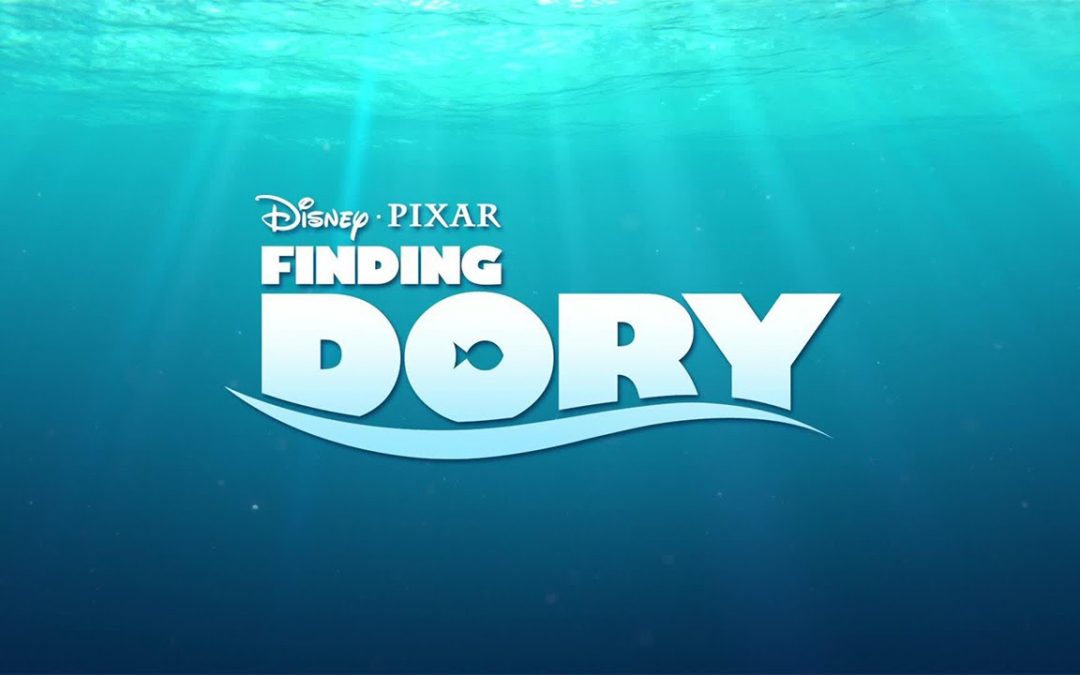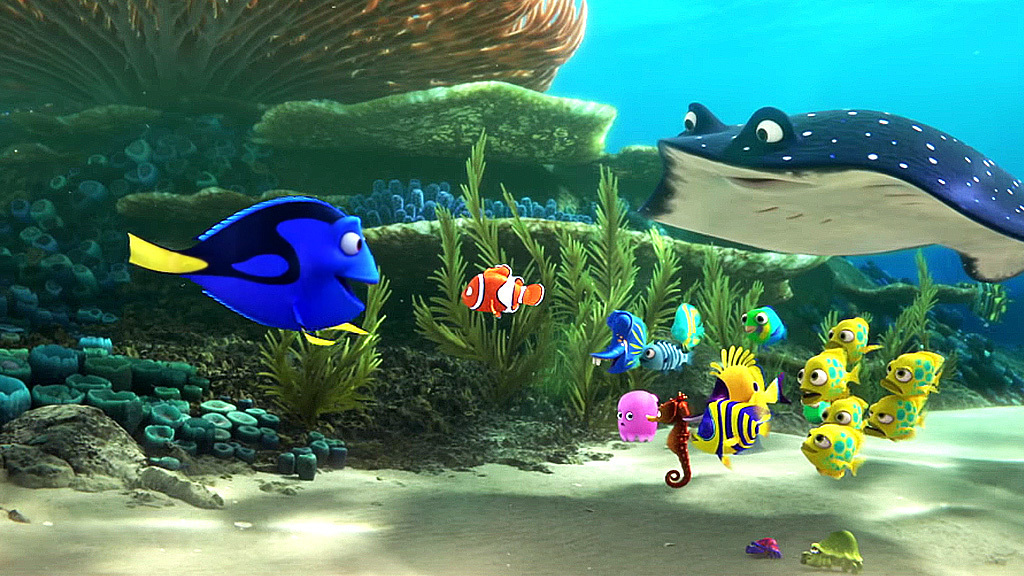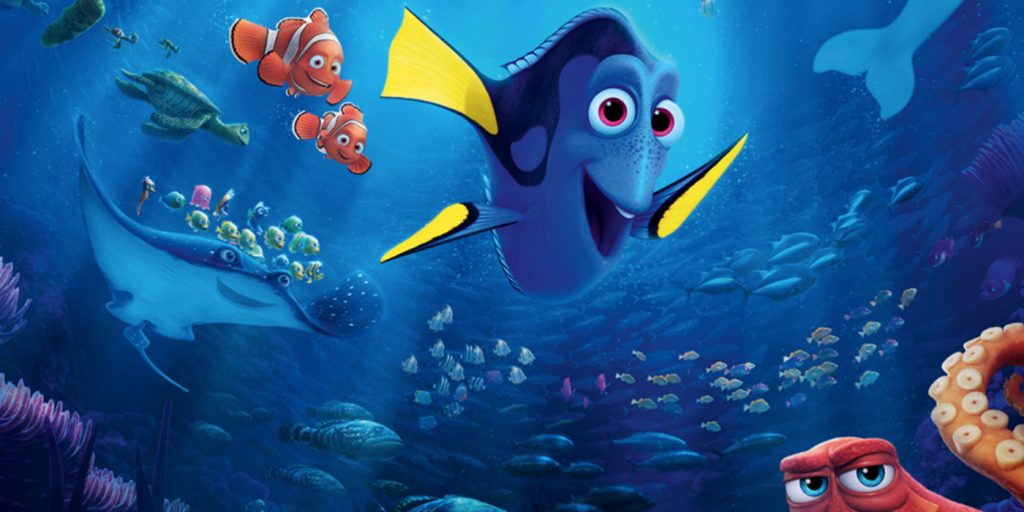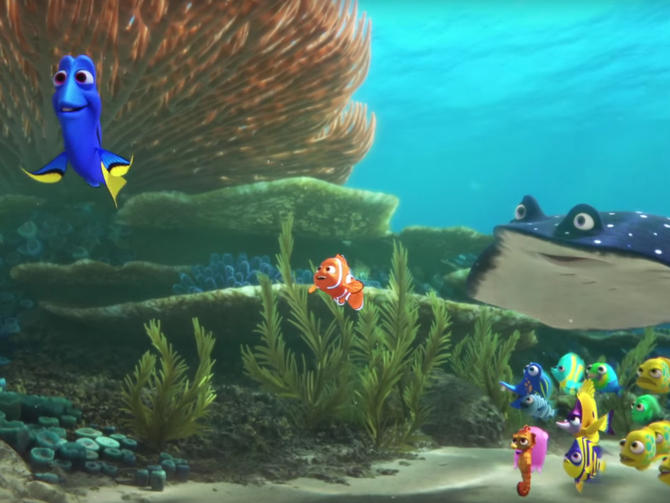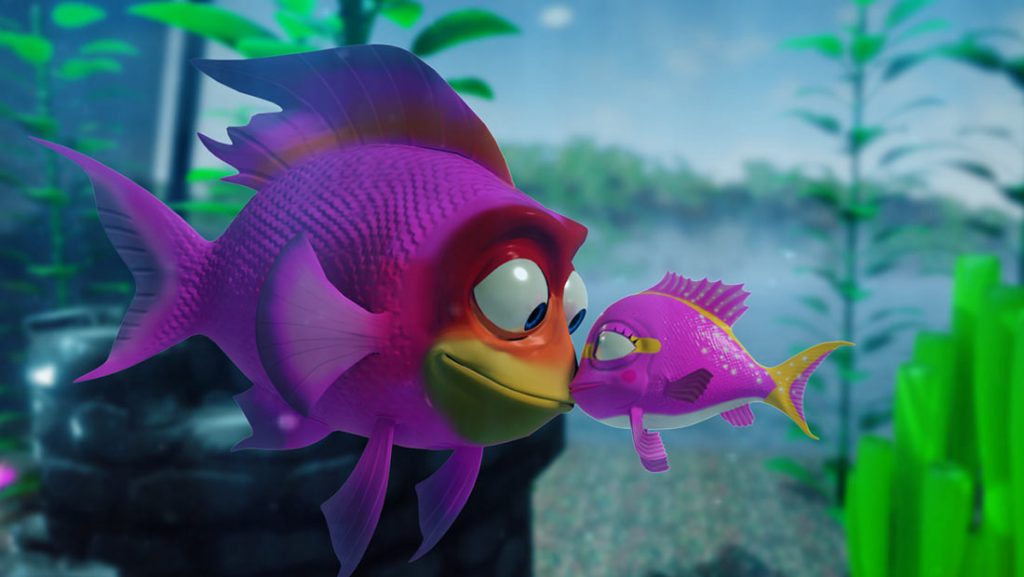In the ravishing sequel to ‘Finding Nemo,’ Ellen DeGeneres’ amnesiac tile fish learns to remember what life is all about.
“Finding Dory,” the ingeniously pleasing sequel to “Finding Nemo,” opens with a scene that merges our affection for a beloved character with a bit of a jolt. We see Dory, the friendly blue tang fish from the first film, back when she was a big-eyed toddler with a babyish gurgle, getting trained by her parents, Charlie (Eugene Levy) and Jenny (Diane Keaton), to tell a stranger (any stranger), “I suffer from short-term memory loss.” The thing is, poor Dory really does — she can’t even remember the phrase! It’s no wonder that her parents are aghast with anxiety. In a flash, a character with a singular and beguilingly funny trait — the inability to remember almost anything for more than 10 seconds — comes at us in a whole new way. She’s no longer a daffy amnesiac. She’s a child fish with a serious disability.
Have the creators of “Finding Dory” gone all politically soft and sensitive on us — in response, perhaps, to the memory-challenged community? Hardly. They’ve done something better: figured out how to take an already perfect character and deepen her in an exquisitely satisfying way. Dory soon drifts away from her parents, and not just because she doesn’t know how to get back to them. She can barely remember that she has parents. As surely as the death of Bambi’s mother, this primal set-up rips a small emotional hole in the audience, one that we’re desperate to see filled. “Finding Dory” then leaps forward to one year after the first film, when Dory is an innocent grown-up with no idea of what she’s looking for. To figure that out, she must learn to stop forgetting.
Andrew Stanton and Angus MacLane, the co-directors of “Finding Dory,” have made a beautiful, rambunctious, and fully felt sequel — a movie totally worth its salt water. It’s a film that spills over with laughs (most of them good, a few of them shticky) and tears (all of them earned), supporting characters who are meant to slay us (and mostly do) with their irascible sharp tongues, and dizzyingly extended flights of physical comedy. The images never stop dazzling us with their awesome, tactile sheen — their oceanic incandescence. (Who needs 3D glasses? Even if you happen to see “Finding Dory” in 2D, just about every shot in it pops out at you with beauty.) In a summer of tepid and disappointing sequels, audiences from around the world will be grateful to encounter a sequel to a movie as beloved as “Finding Nemo” that more than lives up to the first film’s casually magical charms.
At this point, the Pixar films fall into a few distinct tiers of ambition and achievement. There’s the visionary top drawer: the timeless works of peerlessly witty, mind-opening artistry (all three “Toy Story” films, “The Incredibles,” “Inside Out”). There are the whimsically clever concoctions that may not, in the end, do more than entertain you, but they do it splendidly (“Cars,” “Monsters, Inc.” and its sequel, to name a few). There are the rare overly busy duds (“Cars 2,” “A Bug’s Life”). “Finding Nemo” may be in a category all its own. To this critic, it has never been quite in the top drawer — it lacks that full-on audacity of imagination. Yet it has so much zest, soul, and heart-of-the-ocean visual poetry that it’s still a movie you can cherish as a classic. It’s basically a sentimental odyssey: Can Marlin (Albert Brooks), the grumpy beleaguered clownfish, with the help of the winsomely forgetful Dory, locate his missing son? And that raises a challenge for the sequel. How can it be the same…but truly different?
In “Finding Dory,” our heroine, sparked by a split-second brain flash, remembers — before she forgets again — that she has parents, and that single momentary dislocation is enough to retrigger the feeling that her family is out there. It’s enough to tell her that she’s lost. So she decides to find them, with Brooks’ Marlin — and Nemo (Hayden Rolence) — in tow. If the movie were just one more extended underwater search, it might have played like glorified leftovers. And Dory, for a while, does seem the unlikeliest candidate on earth to be a sidekick suddenly placed center stage. Her epic personality tic threatens to become annoying. But Stanton and MacLane, working from a script by Stanton and Victoria Strouse, execute a minor marvel: Dory’s memory starts firing — not in a false, un-Dory way, but one jaggedly subliminal mind shard at a time, like a series of acid flashbacks. She’s still a fish who can really only see what’s right in front of her, and that, as before, is the beauty of Ellen DeGeneres’ vocal performance — her high-spirited myopic exuberance. Yet each new drop of memory triggers something in Dory, not so much a change in identity as a gain in dimension. She still knows very little, but she becomes someone who knows what she doesn’t know.
Under the sea, 13 year later, proves to be an even more ravishing place than it was in “Finding Nemo.” The swaying stalks of kelp are as majestic as the trees in “The Lord of the Rings.” An irradiated octopus looms like a nightmare Cyclops, and a big old grouchy hairy oyster who speaks in vaudeville rim-shot jokes isn’t all that funny, but check out his ginormous pearl! The gliding schools of fish and pulsating coral reefs glow like creatures out of a psychedelic rainbow fairy land — which, of course, is just what the bottom of the ocean is.
“Finding Dory,” like “Finding Nemo” before it, invites you to dive in with your eyes, which is why these movies are submersive daydreams for children. But it’s when the picture arrives at the Marine Life Institute, a theme-park conservatory ruled over with hilarious goddess-like force by the recorded voice of Sigourney Weaver on the loudspeaker, that the movie takes off as a swim-for-your-life slapstick adventure. Stanton and MacLane use the ocean as a mystic setting, but they use the Marine Life Institute the way Stanton used the spaceship in “WALL-E”: as a fantastical playground. In a laboratory, Dory meets Hank (Ed O’Neill), a scaly-slimy curmudgeon of an octopus who is also a chameleon (he blends into everything from a tiled wall to a metal stair banister to a “Hang in There, Baby!” kitty poster). Hank, for all his quick-change artistry, is a casualty of captivity — he just wants to curl up in a boxy aquarium somewhere. But bonding and redemption ensue, as does a voyage to the park’s ominous inner sanctum, a place where fish are placed into species containers and shipped off to deepest, darkest Cleveland, where they will live forever as joyless specimens. In a Touch Pool, children’s hands come down on the fish like bombs. The fight against the crushing of the spirit is built right into the Pixar aesthetic, and it’s part of what animates Dory. She’s looking to rejoin her parents, but she’s also looking to rescue and liberate them.
At a certain point, it will probably strike you that the title of “Finding Dory” seems like a misnomer (albeit a catchy one), since the story is all about Dory trying to find Charlie and Jenny. But, of course, it’s really about Dory discovering who she is after she gains the ballast of having a little bit of memory. But only a little bit. Dory’s glory is that her amnesia makes her totally responsive to life. She’s living in a pure existential state, unencumbered by the past, and that’s why she gets things done. Her way of solving problems becomes a credo (“What would Dory do?”), and it’s almost poetically funny when she herself adopts the credo. The movie, in the end, is about finding Dory. It’s about how the past, for her, isn’t really so past. It’s just the ability to remember life as we’re living it, one moment at a time.

